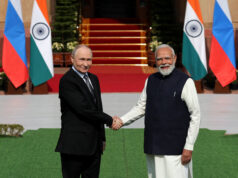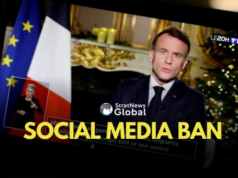China on Friday removed tariffs on certain U.S. imports, signaling a potential softening in the ongoing trade war. However, Beijing swiftly dismissed President Donald Trump’s claim that negotiations between the two nations were underway.
Business groups said China has allowed some U.S.-made pharmaceuticals to enter the country without paying the 125% duties that Beijing imposed earlier this month in response to Trump’s 145% tariffs on U.S. imports.
Also, a list of 131 product categories said to be under consideration for exemptions was circulating among some businesses and trade groups. Reuters could not verify the list, which includes vaccines, chemicals and jet engines, and China has not yet communicated publicly on the issue.
Trump’s administration has in recent days signaled it is looking to de-escalate the confrontation between the world’s two largest economies, and Trump himself told TIME magazine that talks were taking place and that Chinese President Xi Jinping had called him.
“I don’t think it’s a sign of weakness on his behalf,” he said.
‘No Discussions’
China denied that discussions were happening.
“China and the U.S. are NOT having any consultation or negotiation on #tariffs. The U.S. should stop creating confusion,” the Chinese Embassy in Washington wrote on social media.
In addition to the steep tariffs on China, Trump has announced targeted tariffs on dozens of other countries, which he has suspended until July 9. That has set off a scramble among U.S. trading partners to strike individual trade deals with Washington before the deadline — a tall order, given that past trade deals have typically taken years to negotiate.
The U.S. President told reporters at the White House that he was very close to a deal with Japan. That is seen by analysts as a ‘test case’ for other bilateral trade agreements, though talks could be difficult. Some expect Prime Minister Shigeru Ishiba and Trump to announce a pact when they meet at the G7 summit in Canada in June.
Trump’s ‘200 Deals’
Trump separately told TIME that he had made “200 deals” that would be completed within three to four weeks, though he declined to provide specifics. He said he would consider it a “total victory” if tariffs were still 20% to 50% a year from now.
The office of the U.S. Trade Representative said it had held a productive meeting with South Korea on Friday.
Trump has argued that his thicket of trade barriers will revive U.S. manufacturing industries that have been hollowed out by global competition. Economists, however, broadly warn that they would lead to higher prices for U.S. consumers and increase the risk of recession.
In addition to the country-specific tariffs, Trump has also imposed a blanket 10% tariff on all other U.S. imports and higher duties on steel, aluminum and autos. He has also floated additional industry-specific levies on pharmaceuticals and semiconductors.
European and Asian stocks headed for a second straight week of gains on Friday and the dollar eyed its first weekly rise in more than a month, as investors took comfort from signs the U.S. and China were prepared to pull back from their trade war. Wall Street’s main indexes opened slightly lower.
(With inputs from Reuters)





